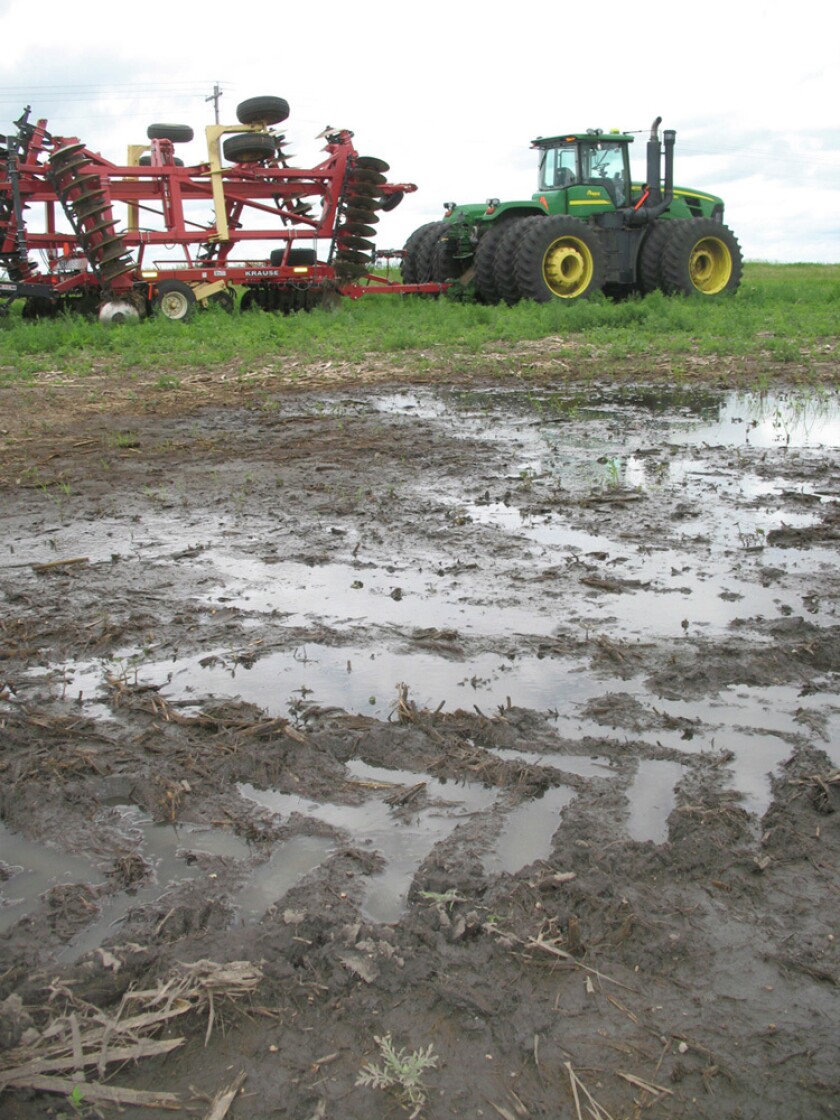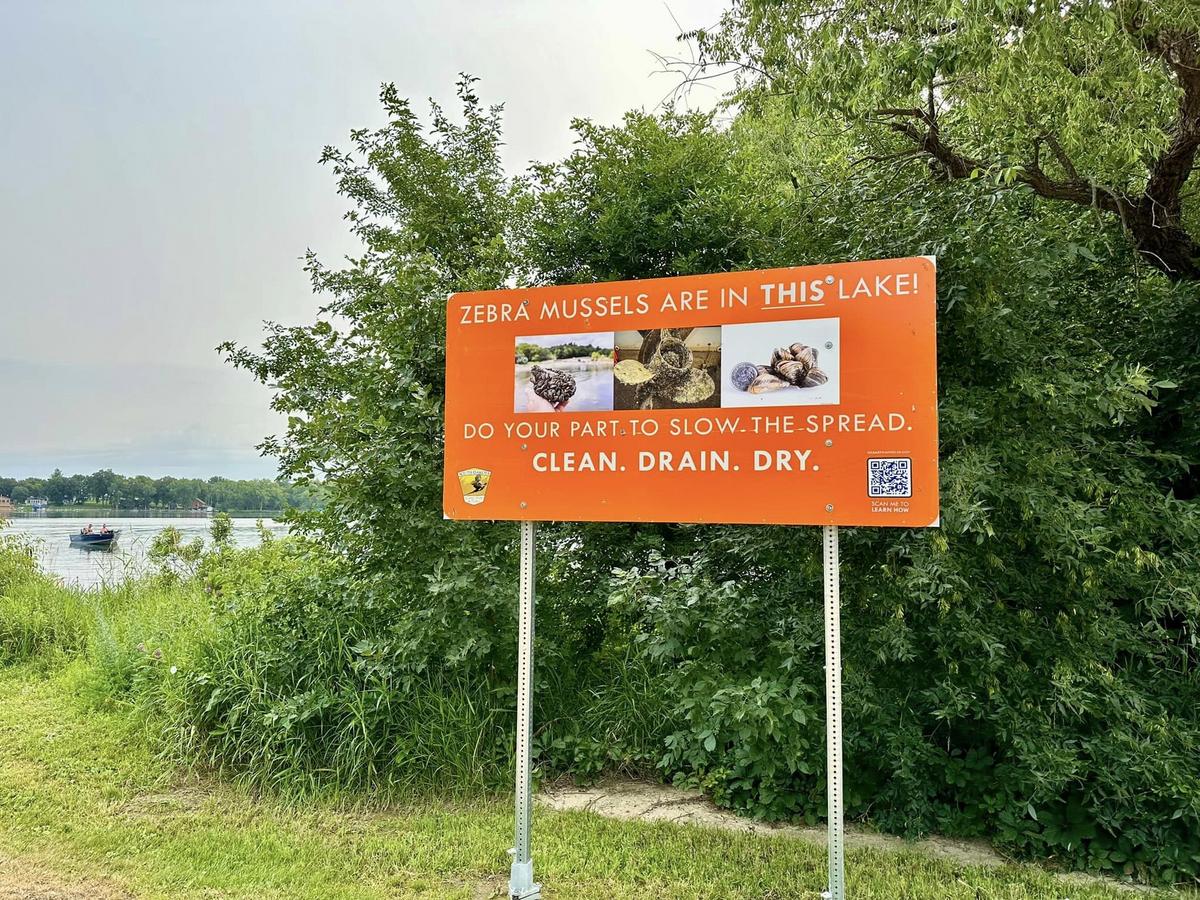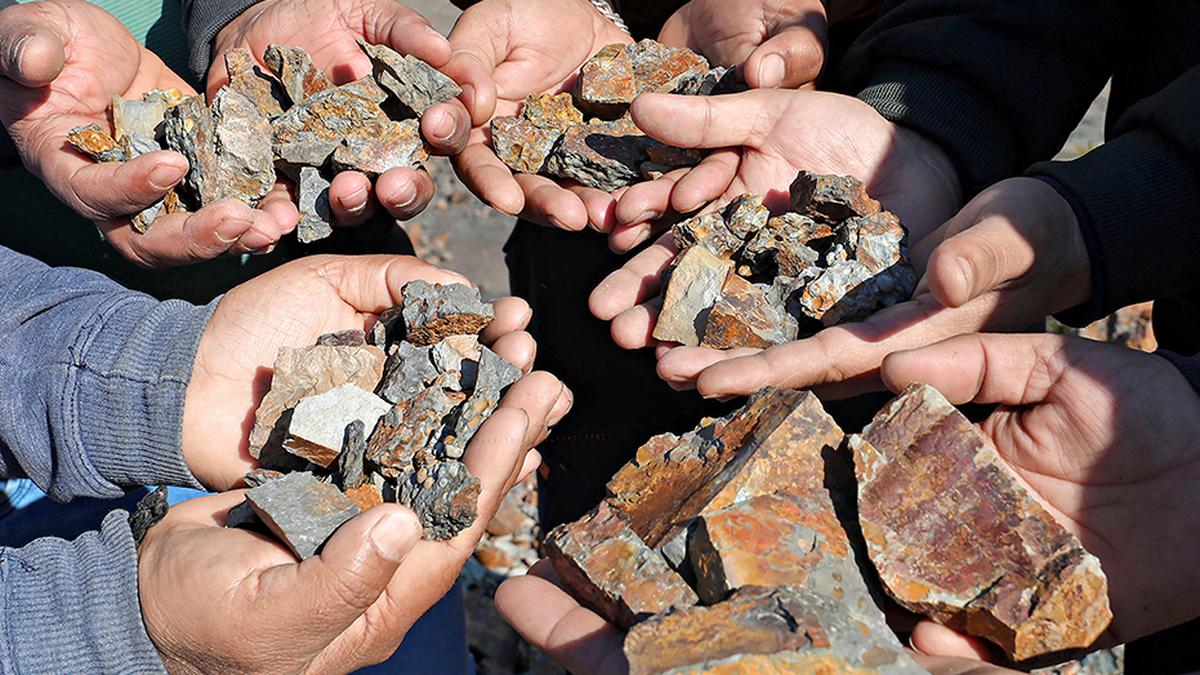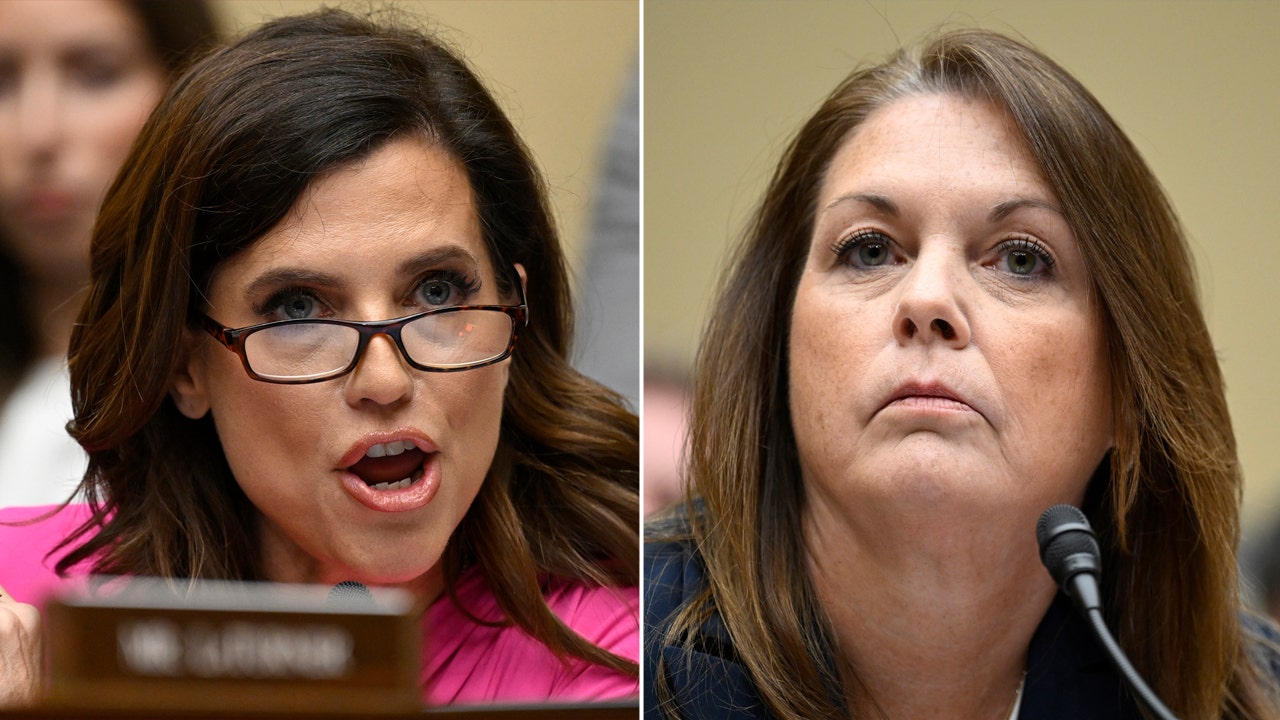North Dakota
Can prevented planting be improved? Farmers from three states weigh in

FARGO — A prevented planting listening session drew about a hundred farmers and crop insurance agents from North Dakota, South Dakota and Minnesota to Fargo to voice their suggestions about how coverage of the
Federal Crop Insurance
provision could be improved.
The listening session in Fargo had one of the largest turnouts of the hearings held so far, Risk Management Agency staff said. That’s not surprising, because the three states, just in the past few years, have had millions of acres of prevented planting.
In 2022, for example
, there were a total of 4 million prevented planting acres in North Dakota, South Dakota and Minnesota, according to the U.S. Agriculture Department Farm Service Agency. The prevented planting in those states included 2 million acres of corn, 811,357 acres of soybeans and 727,251 acres of wheat.
Trevor Peterson / Agweek file photo
Prevented planting coverage
is available for 37 crops grown in the United States and covers situations where conditions make it impossible to plant by the RMA planting deadline for a crop in a given area. RMA is gathering feedback on possible changes to the coverage through a request for information published in the May 23, 2023, Federal Register and at listening sessions.
The Fargo listening session was one of 14 the Federal Crop Insurance Corporation
scheduled across the United States
this summer, starting in June, to hear from people about how prevented planting could be improved, while preserving the integrity of the program. The agency also held a virtual listening session in June. The final sessions will be held this month.
The agency’s listening sessions focused on prevented planting payment calculations of harvest price and contract price, the “1 in 4” rule, and 10% additional coverage. General comments about prevented planting were also accepted.
Under the existing revenue protection plan, farmers who get their crops planted but have below-average crops are compensated for yield losses using the projected harvest price if it is higher than the actual price at spring planting. The coverage was intended to help farmers mitigate the risk of having to buy out delivery contracts they can’t fill because of production losses.
After the large number of
prevented planting acres in 2019 and 2020
, farmers asked if prevented planting payments, like lost production, could increase with the actual harvest price, the Risk Management Agency said.
The use of the harvest price for prevented planting payments wouldn’t impact farmers most years because it requires both an increase in the harvest price and the prevented planting claim, RMA said.

Ann Bailey / Agweek
Statistics from past years indicate that the additional coverage would increase prevented planting payments by about 6%, on average, for the policies with harvest revenue coverage. There would be a commensurate increase in the premiums for the policies.
“We definitely think that should be included,” said Scott Nelson, a Lakota, North Dakota, farmer, and North Dakota Barley Council board member.
Representatives from the North Dakota Corn Growers Association, Northarvest Bean Growers Association and North Dakota Farmers Union also spoke in favor of having an option to use the harvest price.
Nelson also suggested increasing the number of years in the “1 in 4” rule to getting a field planted in one out of the past five or even six years, if there have been presidential disaster programs due to conditions in those years.
“We certainly have multiple years of excessive moisture and rains,” Nelson said.
The “1 in 4” requirement stipulates that acreage must have been planted to a crop, insured and harvested — or if not harvested, adjusted for claims purposes because of an insurable claim of loss — one out of the previous four crop years. The requirement was meant to discourage farmers from planting on land that for consecutive years didn’t produce a crop.
The Federal Crop Insurance Corporation revised the prevented planting insurance provisions to implement the 1 in 4 requirement nationwide in the 2021 crop year.

Contributed / Northarvest Bean Growers Association
Northarvest Bean Growers Association supports the 1 in 4 rule, said Joshua Ihry, a Dazey, North Dakota, farmer and Northarvest Bean Growers Association board member.
“It helps eliminate fraud. It helps keep the producers honest,” he said. During weather cycles when there’s excessive moisture, there is typically still an opportunity to plant in one out of four years, he said.
However, while the rule makes sense, it also has the potential to cause problems for beginning producers who are farming land that doesn’t qualify for 1 in 4 coverage because the land wasn’t previously insured, said Carl Schwab, Groton Ag Services crop insurance agent in Groton, South Dakota.
Under current policy, if farmers take on new land that hasn’t been insured in the past four years and conditions aren’t conducive to planting by the RMA deadline, they have to decide whether to plant at all or take the risk of growing a crop without insurance.
Schwab suggested that RMA allow the acreage of small and beginning farmers who are producing crops on land that had not previously been insured to obtain 1 in 4 coverage, but, at the same time, implement that change in a way that the rule wouldn’t be abused.

Ann Bailey / Agweek
Conversations with RMA senior staff members who have been at listening sessions across the United States indicate that the 1 in 4 rule generally has been supported, said Marcia Bunger, RMA administrator.
The exception to that is western states where there have been consecutive drought years.
“Some of those folks already have become ineligible because of the ongoing drought,” she said.
Farmers and crop insurance agents at the Fargo listening session, like at other listening sessions across the United States, generally expressed their support for the 10% buy-up option and the contract price option.
The 10% buy-up option — which would allow farmers to receive 10% more payments if they elect to make a higher premium payment — provides revenue to pay for additional costs of prevented planting, including purchases of herbicides, additional tillage and cover crops, Ihry said.

Jaryn Homiston / Agweek file photo
Northarvest Bean Growers Association also supports the provision that would allow farmers to use their contract prices to determine the insurance guarantee.
“We feel that this would especially greatly benefit dry bean growers, where you’re growing a certain type of dry bean that potentially might have a yield drag, but it does have a higher price,” Ihry said.
The North Dakota Soybean Growers Association also supports the use of the contract price, said Justin Sherlock, an association board member who farms near Dazey.
“We feel that offering a contract price would be a good option for the producer,” he said, noting that some farmers raise specialty soybeans, such as food-grade soybeans, under contract.
Bunger, a South Dakota farmer and former crop insurance agent, told the farmers and crop insurance agents at the Fargo meeting that their feedback about the prevented planting provisions was valuable as RMA considers changes in prevented planting provisions.
“As crop insurance evolves and changes, we try to be as nimble as possible,” Bunger said. ”I think it’s in the best interest of all if everyone has good coverage or access to good coverage so Congress isn’t looking at ad hoc disaster assistance.”

Mikkel Pates / Agweek file photo
The Risk Management Agency will hold its final listening session in Las Cruces, New Mexico, on Aug. 24, 2023. Comments are due Sept. 1, 2023, at regulations.gov. The request for information, including details for submitting feedback, is available on the Federal Register notice:
https://www.federalregister.gov/documents/2023/05/23/2023-10926/request-for-information-and-stakeholder-listening-sessions-on-prevented-planting.
“I think as we receive all of these comments, we are getting some great ideas,” Bunger said.
Whether the suggestions can be implemented will depend on how they affect farmers across the United States as a whole. While a national policy is easier to administer, it’s not always the most beneficial to farmers in specific regions of the country, she said.
After the information from the listening sessions is compiled and made available for public viewing, RMA staff will start working on the prevented planting provisions. The agency will look at common themes and differences and talk to actuaries about what changes are possible, Bunger said.

North Dakota
Tuesday is Military Appreciation Day at the ND State Fair

MINOT, N.D. (KMOT) – This is a reminder for servicemembers and their families that the North Dakota State Fair is continuing its long-standing tradition of honoring those who serve with a special Military Appreciation Day on Tuesday.
Military members and their families can enjoy lunch from 11 a.m. until 1 p.m. at the north festival tent.
The event is sponsored by the N.D. Beef Commission, N.D. Stockmen’s Association, and N.D. CattleWomen.
They can also enjoy free carnival rides from 1 p.m. to 3 p.m., half-off unlimited ride wristbands, and $2 off go-cart rides.
Copyright 2024 KFYR. All rights reserved.
North Dakota
Applications now available for 2024 North Dakota swan license

BISMARCK – Hunters can now apply for a 2024 North Dakota swan license
on the Game and Fish Department’s website
at gf.nd.gov, the department said Monday, July 22.
North Dakota residents and nonresidents are eligible to apply. The resident swan license is $10, while the nonresident fee is $30. The application deadline is Aug. 21.
North Dakota’s statewide tundra swan hunting season opens Sept. 28, and 2,200 licenses are available. Successful applicants will receive a tag to take one swan during the season. Since swans are classified as waterfowl, nonresidents may hunt them only during the period their nonresident waterfowl license is valid.
All swan hunters, regardless of age, are required to have a general game and habitat license when applying. In addition, nonresidents must have a waterfowl license, and residents 16 and older need a small game or combination license.
North Dakota
Zebra Mussels In North Dakota Lakes: Will It Really Be That Bad?

Zebra mussels are going to ruin all of our lakes right?
Okay, I know I’m going to take some heat on this, but here goes. We’ve been hearing about zebra mussels for a long time now. How they will destroy ecosystems, ruin beaches, clog up water intakes, compete with native species, etc.
You’ve seen the commercials and billboards from North Dakota Game and Fish, “Clean, Drain and Inspect.” Zebra mussels are a problem, but is it really all doom and gloom? More on that in a moment.
Zebra mussels are now in several North Dakota lakes and rivers, and you can bet more will be added in the future.
They include the Red River, Lake LaMoure, Lake Ashtabula, Lake Elsie, the James River, and the Sheyenne River all in eastern North Dakota.
So far western North Dakota has been spared, but you can bet zebra mussels are coming. Here’s a map and more on ANS-infested waters in North Dakota.
Humans are considered the primary transporter of zebra mussels, but there are other spreaders. According to Researchgate, waterfowl can transfer zebra mussels at the larvae stage.
What are we going to do about millions of migrating waterfowl each year? Not to mention other shorebirds, reptiles, and even mammals.
I’m very familiar with zebra mussels. I have a cabin on Enemy Swim Lake in northeast South Dakota. We’ve had zebra mussels present in the lake now going on for 3 years.
(A very small zebra mussel that was found on our beach this past weekend.)
Enemy Swim is located about 5 miles south of Pickerel Lake in South Dakota. Pickerel Lake has had zebra mussels for a few years longer than my lake.
Despite joint efforts from Fish and Game, cabin owner volunteers, and interns from Fish and Game with inspection points at the boat ramp, zebra mussels still found their way into my lake. I know we all did our part to prevent it, but I sometimes think that eventually, nature will take its course.
Will zebra mussels really ruin a lake?
There’s a lot of big claims and theories out there. No doubt it will affect your beach life. You will have to wear water shoes because zebra muscles can be sharp and could cut your feet. I know I swim with my water shoes normally anyway, as I don’t like creepy crawlies touching my feet in the water.
Will zebra mussels cause your lake property values to crash?
To be honest, no sign of that anywhere. Much of Minnesota’s lakes are infested with zebra mussels. People are still spending millions of dollars for cabins on Minnetonka, Pelican, or Detroit Lakes area lakes.
Even Pickerel Lake, next to my lake has people snatching up some very expensive million-dollar cabins. You can’t even find a cabin for sale on my lake. According to swnewsmedia, there’s no link between a drop in property values and zebra muscles.
Zebra mussels will actually clear up the water they infest.
This might improve the fishing, depending on the lake. Species like Smallmouth Bass, Perch, Walleyes, and even panfish are known to gorge on zebra mussels. You might catch bigger fish because of this.
With cleaner water means you will have more sunlight and more vegetation in the lake. Again, this is thought to improve the size of the fish. Fish will have more places to hide and grow bigger. It may cause anglers to adapt to new strategies to catch fish. In some cases, it could make fishing more difficult.
As far as whether zebra mussels will destroy the ecosystem of lakes?
I’m going to come right out and say it. I think this is highly exaggerated. I’m not a biologist and don’t claim to be one.
Zebra mussels have been in the Great Lakes since the 1980’s. The Walleyes and Smallmouth Bass have never been bigger. People are still catching fish and lakes are still alive.
Zebra mussels have been in Minnesota lakes now for decades and the cabin owners I know say nothing has changed except a little extra cleaning on the docks when they pull them out each year.
Lakes like Lake of the Woods, Mille Lacs, and all of the lakes around Detroit Lakes are still alive and well.
Let’s face it: Even the highly prized Walleye is an invasive species to lakes in our area.
In conclusion:
When zebra mussels reach your favorite lake it will certainly change the ecosystem. Your “lake life” will likely have to adapt to some necessary changes.
However, will zebra mussels turn your lake into a barren wastewater? I don’t think so. Adapt or die. That’s life in a nutshell.
Do I want zebra mussels in our lakes? No, of course not. However, I’m being realistic. Sometimes you have to look for the good with the bad.
North Dakota’s Top 11 Lakes According To Our Fans
Plant Some Of These In Your Garden to Keep Mosquitoes Away
Gallery Credit: Michelle Heart
-

 Politics1 week ago
Politics1 week agoTwo key states to see massive GOP voter registration operation
-

 News1 week ago
News1 week agoWhy the next president's judicial appointments will impact climate action
-

 News6 days ago
News6 days agoIn Milwaukee, Black Voters Struggle to Find a Home With Either Party
-

 News1 week ago
News1 week agoVideo: Biden Asks America to ‘Lower the Temperature’
-

 World1 week ago
World1 week agoUkraine: shelling in Kherson leaves at least two people dead
-

 Politics1 week ago
Politics1 week agoBiden tells Michigan crowd he's 'not going anywhere' amid chants of 'don't you quit'
-

 News4 days ago
News4 days agoVideo: Young Republicans on Why Their Party Isn’t Reaching Gen Z (And What They Can Do About It)
-

 World3 days ago
World3 days agoFreshers' week in Strasbourg for new EU lawmakers














